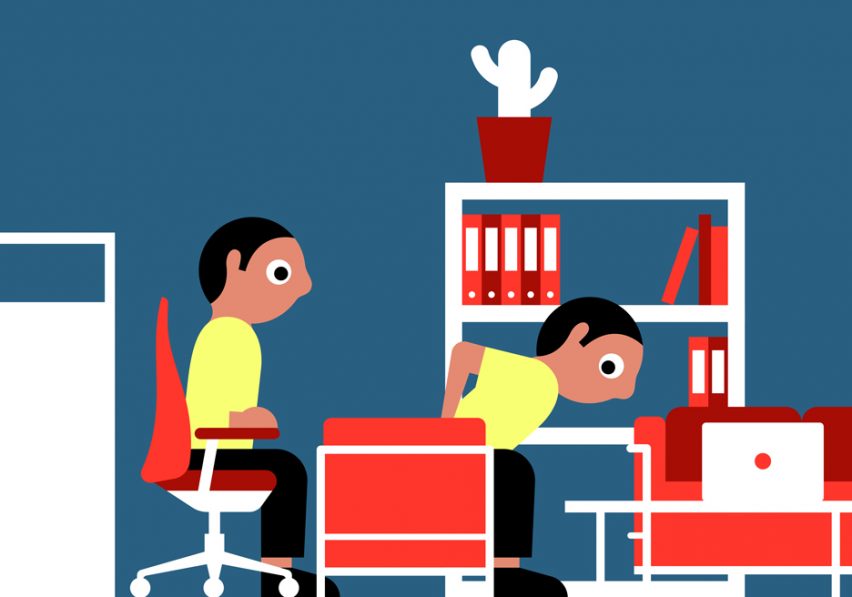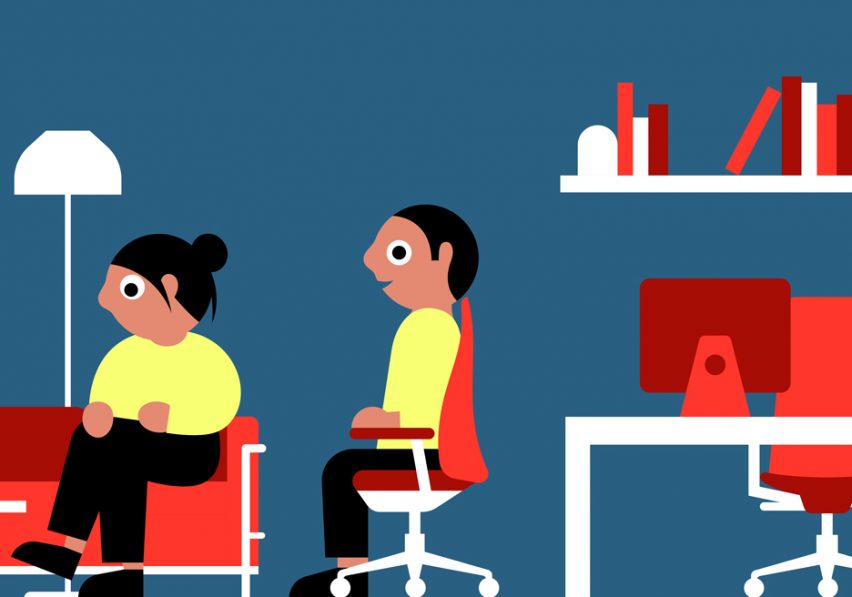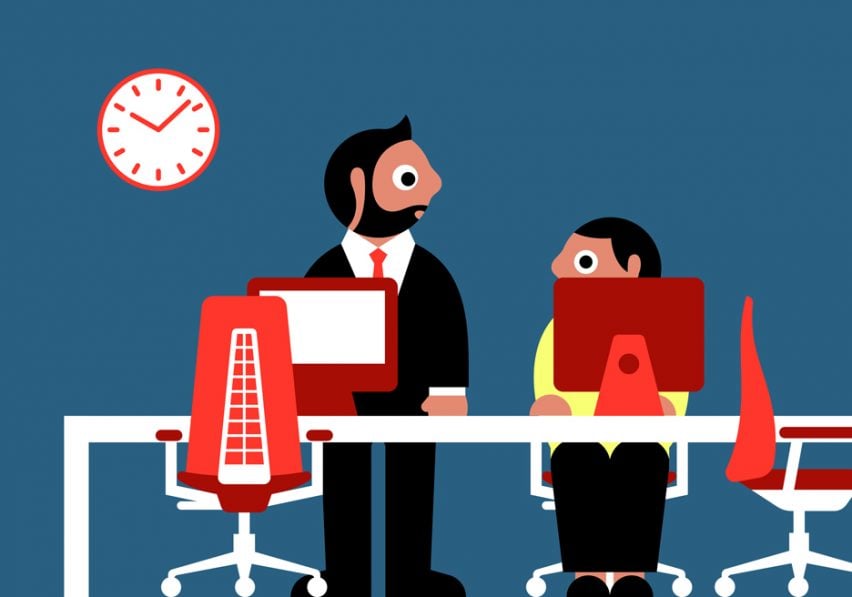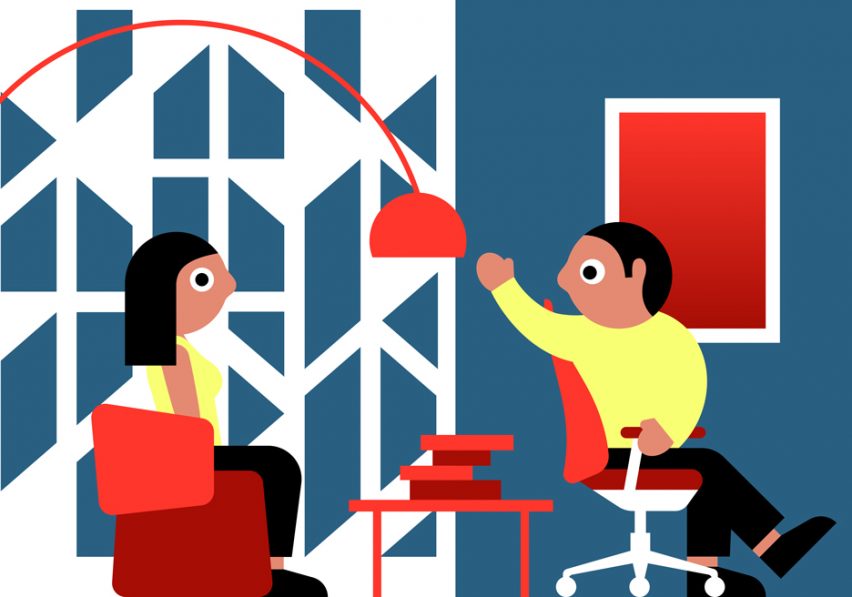Ergonomics not evolving quickly enough for the modern workplace, says Haworth
Haworth white papers: working styles are changing, but ergonomic design is stuck in the days of the "cubicle farm" and not evolving quickly enough to support more mobile employees, according to US furniture giant Haworth.
"The very nature of work is changing," says Haworth in its white paper Active Ergonomics for the Emerging Workplace. "Technology has freed people to work anywhere, and a growing proportion of that work is collaborative and social."
"But traditional office ergonomics does not address group work or spaces. These emerging space types are being created with no ergonomic guidance," it warns. "Organisations that fail to apply a 'big picture' approach to office ergonomics are missing the opportunity to provide a safe and high-performing workplace for their employees."
Collaborative work now accounts for as much time in the average office worker's day as individual computer work, according to the white paper – meaning that employees are more likely to be moving between a variety of formal and informal spaces.
Younger workers in particular expect a wide range of interactions rather than just heads-down desk work, according to Michael O'Neill, Haworth's head of global workplace research, and author of the white paper.
"That change is well established, it's just the thinking around the spaces that is lagging," he said.
Ergonomics is a design discipline that focuses on creating products, processes and environments that physically support the people that use them while working.

Classic ergonomics concentrates on individual workstations, with the assumption that an employee stays in one place throughout the day.
It focuses on the employee's seated posture at their workstation, with factors including the distance of the screen from their eyes, the position of the hands and wrists over the keyboard and desk, and the height of the desk.
Correct posture has been proven to improve productivity as well as worker health, with poor posture associated with problems like repetitive strain injury and back pain.
But standing desks, casual sofas, hot-desking, informal meeting areas and quiet spaces for short bursts of focused work within noisier, more collaborative open-plan offices are becoming increasingly common in the modern workplace.
And moving more can significantly reduce the risk of premature death among office workers, according to recent studies.
"If you look back not that many years, you still see these diagrams of people sitting at a computer keyboard trying to get 90-degree angles at the knees and the waist and the elbows, and neutral posture in the wrist," said Jeff Reuschel, Haworth's global director of design and innovation.
"There really was very little thought about changing that posture, and we certainly didn't talk about movement through a building."
This means that the discipline of ergonomics – in terms of design regulation and education as well as implementation – needs to be rethought.

Haworth suggests replacing classic ergonomics with what it is calling Active Ergonomics – an approach to office design that applies a wide range of ergonomic principles to the whole environment.
"Active Ergonomics is the application of sound ergonomic thinking to the entire vocabulary of space in today's office, as opposed to simply the spaces developed for individual work," explained O'Neill.
"The ergonomic design of a space will have a huge impact on people's performance, and the value that you're getting out of your workforce in terms of their individual and group performance."
Haworth's Active Ergonomics concept is based around three key areas. The first is anthropometrics – or how the body relates to its immediate environment – which is essentially classic ergonomics.
The second is ambients, which relates to environmental conditions like the quality of light and air, noise and temperature.
The final area is movement, which can cover anything from moving from one space to another, to a person being able to adjust their posture to suit the task they're working on.
"Seated collaborative work may involve many quick postural changes, such as turning to hand a document to someone while seated," says the white paper. "In a meeting, lounge, or cafe space with casual furnishings, the furniture and accessories need to support these movements and the use of portable technology."

The white paper outlines a number of examples where the principles of Active Ergonomics can be applied to workspace design.
It says "legibility" – or how easy a space is to understand and navigate – is key to supporting workers as they move through an office space to complete different tasks.
A properly legible layout should offer a stark contrast to an old-fashioned "cubicle farm", where floor plans are monotonously regular in their layout. This latter approach can create a "disorienting maze" for workers.
"Poor legibility of floor plan and spaces has been linked to negative health impacts," says the white paper.
"Legibility is a fundamental part of Active Ergonomics because it puts people's needs first— it is intended to create a positive work experience that makes it easy to locate the type of space needed, and quickly and effectively use each space type," it adds.
"The layout of the office should set up a predictable rhythm that makes it easy for people to learn, or guess, where a desired space type might be found."
This approach should create an office that offers variety through furniture, texture, signage and architectural features that double as landmarks to help workers create a "mental map" of the space.

All of these elements can be used to indicate quiet spaces for focused working, more relaxed collaborative spaces and private areas for more formal meetings.
According to Carlo Shayeb, industrial designer at German design studio ITO Design, good ergonomic office design and Active Ergonomics can "definitely" make people happier in the workplace.
ITO Design specialises in creating ergonomic chairs for a wide variety of design brands. It has been collaborating with Haworth for more than 10 years, and worked with Haworth's internal design team on its newly launched task chair Fern.
The chair features an unusually tall backrest with a central frame made up of multiple bow-like structures – each designed to support a different part of the back – and can be adjusted for "perched" or reclining sitting styles.
"The classic office still exists, but people now want to be able to have multiple ways of sitting," said Shayeb. "It's definitely made ergonomics a bit more open."
"Some of our research is looking at happiness, and if you define happiness as a sense of wellbeing and feeling relaxed at work and comfortable, ergonomics absolutely can create a happier workforce," agreed O'Neill.
"It's so fundamental to the work experience. Physical comfort and functional usefulness has to happen, before you try to achieve the other sorts or performance characteristics that you might want in a workspace."
Illustrations are by Stephen Cheetham.